Audio Mirror Addiction Mono Block Amplifiers by John Hoffman
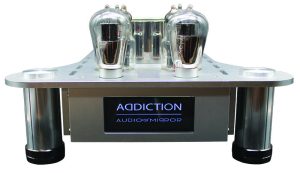
 My friend and fellow reviewer, Terry London, has been speaking highly of Audio Mirror products for a long time and recently reviewed the Wave tube preamplifier, which you can read here.
My friend and fellow reviewer, Terry London, has been speaking highly of Audio Mirror products for a long time and recently reviewed the Wave tube preamplifier, which you can read here.
I have been digging into tube amplification over the last couple of years and have been curious about the Russian 6CC3C output tube used by Audio Mirror and some other companies. Vladimir Bazelkov, owner and designer of Audio Mirror products, discovered the 6CC3C tube after the fall of the Soviet Union. Bazelkov, who had been designing audio equipment for years, was living in his home country of Bulgaria when he discovered that a former military site was selling off tubes. After researching the technical specifications of the tubes being sold, he discovered the 63CC3. Vlad found this tube to be a perfect choice for audio amplification because of its remarkably “high transconductance and exceptionally low output impedance” (more in the Technical Aspects section). Bazelkov has been using this tube for years, experimenting with different circuit designs and biases. The Addiction Mono Blocks are Bazelkov’s latest design.
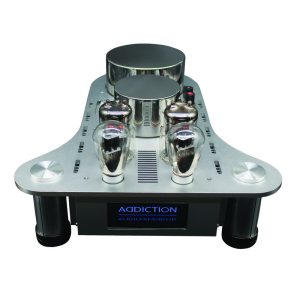
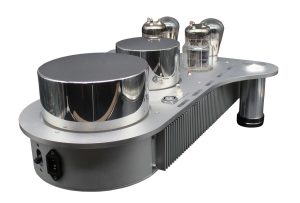
Design Philosophy
 Vlad explained, “All the equipment I design and build is for myself first. I have to like it to put it in production”. The Addiction amplifiers are a Parallel SET design with “five times overrated” power supplies that produce powerful current peaks, low noise, and high dynamics and transients. The power supplies and output transformers are a new design custom-made for Audio Mirror.
Vlad explained, “All the equipment I design and build is for myself first. I have to like it to put it in production”. The Addiction amplifiers are a Parallel SET design with “five times overrated” power supplies that produce powerful current peaks, low noise, and high dynamics and transients. The power supplies and output transformers are a new design custom-made for Audio Mirror.
Vlad did not want to give up his secrets but said that he only uses one capacitor in the signal path, the gain and driver stages are DC connected, and silver wires are used throughout the build. The Addiction amplifiers also have protection from overdriving tubes and arcing or under/over bias issues. They also dissipate heat very well due to the large chassis, so they are warm to the touch, not hot.
The 16″ x 20″ amplifiers weigh in at 40 lbs and produce 45 watts per channel. Specs and a link to the manufacturer’s website are below. They have a high-end artistic design that is a metallic triangle with rounded corners. The top is a large aluminum plate with chrome transformer covers. Three fluted aluminum columns serve as legs, and IsoAcoustics feet are installed to dampen and absorb vibration. The build quality is impressive, as is the design.
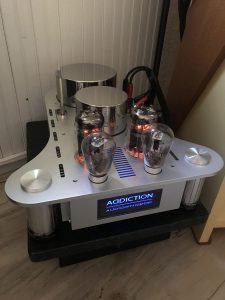
Listening & the “wow” feeling.
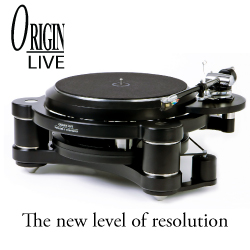 Usually, when I get an immediate “wow” sensation from an audio component, whatever quality is causing the “wow” becomes noticeably pronounced and often annoying over time. This is not the case with the Audio Mirror Addiction monoblocks, which wowed me from the first listen. What am I hearing? The tone is natural, not tube warm or solid-state analytical; it has the purity of a SET design married to power. There is a deep, holographic, and layered sound stage with more air and space surrounding instruments than I have heard from any other amplifier.
Usually, when I get an immediate “wow” sensation from an audio component, whatever quality is causing the “wow” becomes noticeably pronounced and often annoying over time. This is not the case with the Audio Mirror Addiction monoblocks, which wowed me from the first listen. What am I hearing? The tone is natural, not tube warm or solid-state analytical; it has the purity of a SET design married to power. There is a deep, holographic, and layered sound stage with more air and space surrounding instruments than I have heard from any other amplifier.
As a comparison, I found the sound of the Addiction Mono amplifiers to land right between my reference Audio Note Kit EL34 and Solid State SPL Performer S1200. These amplifiers produce bass with a surprisingly visceral grip and weight that exceeds the SPL Performer S1200 presentation.
 The high current peaks Vlad mentioned above produce very powerful dynamics that give you a jump factor. Transients are crisp and burst from a dead silent background. Last year, I was in Fort Collins, Colorado, in a restaurant that had a jazz trio (guitar, drums, and bass) low enough that dinners could talk to each other. What I heard from the Trio is what the Addiction amplifiers present: instruments that are separate in space, don’t bleed into each other and have a weighty, realistic sound. The Addiction Mono blocks do this illusion better than any other amplifier I have had in my room, and they don’t lose this quality at a lower volume.
The high current peaks Vlad mentioned above produce very powerful dynamics that give you a jump factor. Transients are crisp and burst from a dead silent background. Last year, I was in Fort Collins, Colorado, in a restaurant that had a jazz trio (guitar, drums, and bass) low enough that dinners could talk to each other. What I heard from the Trio is what the Addiction amplifiers present: instruments that are separate in space, don’t bleed into each other and have a weighty, realistic sound. The Addiction Mono blocks do this illusion better than any other amplifier I have had in my room, and they don’t lose this quality at a lower volume.
Tracks and Albums
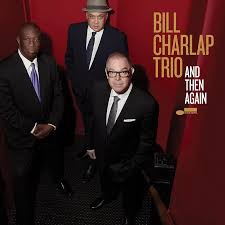 These qualities were in full audio display when listening to Bill Charlap’s new album “And Then Again (Live).“ Pianist Charlap and Peter Washington on double bass and Kenny Washington on drums have been putting out albums since 1997. The “And Then Again (Live)” was the first album I played after letting the amps warm up and my first of many “wow” sensations from the Addiction amplifiers. Listening to this live recording connected me to the actual performance at the venue. The drums and symbols are present and lifelike, and the double bass presentation gives me the real instrument in the room feeling.
These qualities were in full audio display when listening to Bill Charlap’s new album “And Then Again (Live).“ Pianist Charlap and Peter Washington on double bass and Kenny Washington on drums have been putting out albums since 1997. The “And Then Again (Live)” was the first album I played after letting the amps warm up and my first of many “wow” sensations from the Addiction amplifiers. Listening to this live recording connected me to the actual performance at the venue. The drums and symbols are present and lifelike, and the double bass presentation gives me the real instrument in the room feeling.
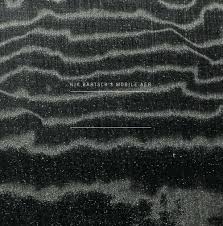 I tend to jump around different genres of music and found Swiss pianist, composer, band leader, record producer, and author Nik Bärtsch. He is like a Swiss Army knife of music. I put on track Modul 29 from the album “AER.” This percussion fest has some gong and piano and powerful sounds coming unexpectedly. A couple of minutes in on the track, drums arrive in an unexpected, powerful way. The Addiction amplifiers produced powerful chest-hitting bass, causing me to jump. Later in the track, very large drums are struck, allowing the Addiction Mono amplifiers to produce the most physical and well-defined low-frequency bass out of my Devore O/96’s than I have previously heard.
I tend to jump around different genres of music and found Swiss pianist, composer, band leader, record producer, and author Nik Bärtsch. He is like a Swiss Army knife of music. I put on track Modul 29 from the album “AER.” This percussion fest has some gong and piano and powerful sounds coming unexpectedly. A couple of minutes in on the track, drums arrive in an unexpected, powerful way. The Addiction amplifiers produced powerful chest-hitting bass, causing me to jump. Later in the track, very large drums are struck, allowing the Addiction Mono amplifiers to produce the most physical and well-defined low-frequency bass out of my Devore O/96’s than I have previously heard.
Technical Aspects, Why the 6C33C Tube?
Vlad sent me a technical paper on the 6C33C tube, which is attached below. Design is always a compromise between this and that. More of this limits the amount of that. Creation compromises this and that to get the most pleasing and lifelike sound from parts.
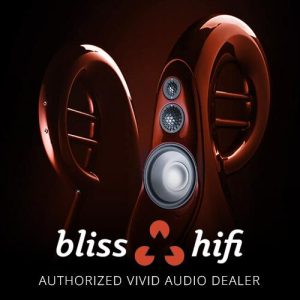 The technical paper’s salient point was that capacitances negatively affect the high-frequency side of the audio range. Major capacitances are found in wound components such as transformers between winding and winding – winding and core – layers – turns. Stray capacitances are found from the input to the output, including the RCA jacks, the connecting wires, and the output transformer.
The technical paper’s salient point was that capacitances negatively affect the high-frequency side of the audio range. Major capacitances are found in wound components such as transformers between winding and winding – winding and core – layers – turns. Stray capacitances are found from the input to the output, including the RCA jacks, the connecting wires, and the output transformer.
When looking at tube characteristics, the lower the internal resistance of the tube, the lower the number of windings in the transformer required to obtain a suitable amount of bass. The 6C33C tube’s internal resistance can go as low as 80 (eighty) Ohms. The 300B, for example, is 700 Ohms, which is important because the ratio between the 6C33C and the 300B is approximately 1 to 3 (189 turns against 555). Therefore, the 6C33C allows fewer primary turns in the transformers, reducing capacitance issues and allowing the designer to reach a higher frequency response while still getting a lot of bass.
The Addiction Monoblock amplifiers achieve the balance of open, airy natural highs with amazing lifelike bass and dynamics, all in a modern-looking design. The build is quality, and the sound is stunning. If you can hear them, it is worth it.


Specifications:
Price: $19,900/pair
Frequency Response:
21Hz – 65kHz +/- 3db
T.H.D. 0.6% at 45W
S/N ratio >90db
Inputs:
Total inputs 2
1 unbalanced RCA linear input
1 XLR balanced linear input
2V/47kohm input sensitivity
Outputs: 45W at 6-Ohm output impedance
Dimensions:
16″ wide x 20″deep
40 lb weight
Tubes used:
1 x 6SL7/6N9S(Russian equivalent)
1 x 6SN7(6N8S(Russian equivalent)
2 x 6S33S(6S33S – V)
Contact:
Audio Mirror
13315 York Ave S
Burnsville MN 55337
Email: contact@audiomirror.com
Website: Audio Mirror website
Article on the 6C33C tube
John’s Associated Equipment
Grimm MU2 Music player (Streamer/DAC/Preamplifier)
SPL Performer S1200 amplifier
Audio Note Kit EL 34 amplifier
Pine Tree Audio ISO-Quad interconnects
Pine Tree Audio Rainbow speaker cables
Devore Fidelity O/96 speakers
Stereo Times Masthead
Publisher/Founder
Clement Perry
Editor
Dave Thomas
Senior Editors
Frank Alles, Mike Girardi, Russell Lichter, Terry London, Moreno Mitchell, Paul Szabady, Bill Wells, Mike Wright, and Stephen Yan,
Current Contributors
David Abramson, Tim Barrall, Dave Allison, Ron Cook, Lewis Dardick, John Hoffman, Dan Secula, Don Shaulis, Greg Simmons, Eric Teh, Greg Voth, Richard Willie, Ed Van Winkle, Rob Dockery, Richard Doron, and Daveed Turek
Site Management Clement Perry
Ad Designer: Martin Perry


.jpg?KeepThis=true&TB_iframe=true&height=430&width=700)
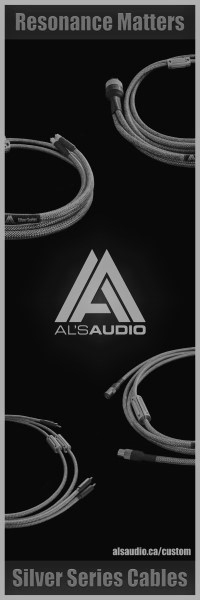


Be the first to comment on: Audio Mirror Addiction Mono Block Amplifiers by John Hoffman